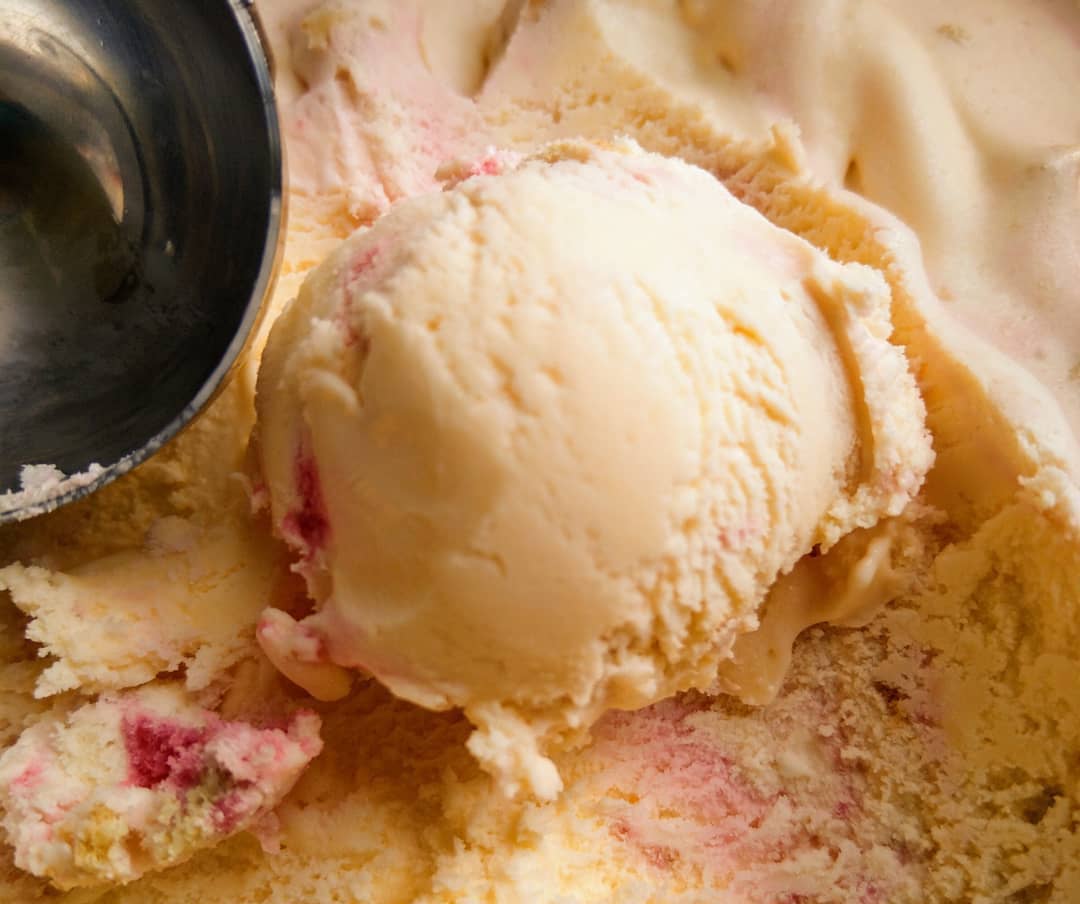Sous vide ice cream

Early on in the UK Covid lockdown, I had to work from home a lot, which meant two things: 1) I suddenly gained over two hours that would have normally been on commuting every week day 2) I was restricted to the house and garden (caveat, a lot of this time and probably more was actually used on childcare, as the kids were at home so I think I ended up with a deficit of time after all, but that didn’t mean I couldn’t use these circumstances as an excuse to get more cooking gadgets).
One such gadget, that I had never really contemplated before, was an ice cream machine. I never really ate much ice cream previously, which is probably why I never thought about it, but given we also got hit with incredibly sunny weather from about April, it seemed like an interesting option.
1. Sous vide ice cream
In my naivety, having never given much thought to ice cream machines before, I honestly thought all you had to do was tip cream, sugar etc into this magic machine and ice cream came out the other end. However, on looking at my first recipe after purchasing the machine I realised there was an initial cooking step. Not just that, but a fairly exacting step, where the ingredients had to be heat to a precise temperature before cooling and then later turning into ice cream. Obviously, as soon as I saw precise temperature control, my mind went to sous vide.
I did some research into it, and the science was pretty interesting, and not just that, it seemed like sous vide would be a really great fit for the job. There is a lot more detail here if you are interested, and reading it, it becomes quite apparent why sous vide is a great fit. A big part of the reason we heat the ice cream ingredients is for pasteurisation, however, normally a home ice cream maker would heat that to quite a high temperature so they don’t need to worry about trying to maintain that stable temperature for 10 minutes (pasteurisation is a product of time and temperature). However, at the higher temperatures there are other things going on that are not ideal for our ice cream.
2. Why do we heat ice cream before making?
The only real reason that we heat the ingredients is pasteurisation. Taken from the above article, and the UK Gov legislation:
Pasteurised ice-cream shall be obtained by the mixture being heated—
(a)to a temperature of not less than 65.6°C and retained at that temperature for not less than 30 minutes;
(b)to a temperature of not less than 71.1°C and retained at that temperature for not less than 10 minutes; or
(c)to a temperature of not less than 79.4°C and retained at that temperature for not less than 15 seconds
This gives us a pretty nice scale of temperatures and timings to aim for, and looks like a perfect job for sous vide. There are also other scientific processes that take place when we heat the ingredients that we want to take advantage of:
- Improve foaming and emulsification - There are quite a lot of scientific words in the linked article about this, but the bottom line is, heating to 72 degrees for 25 minutes improves foaming and emulsification of our ice cream, and basically results in more voluminous ice cream.
- Improve body and texture - likewise, because of science heating to 72 degrees for 25 minutes improves the ice cream texture.
As a final convincer for using sous vide to achieve this, that is at 78 degrees (just 6 degrees above our target temperature), another process kicks in called aggregation and this step impairs the foaming and emulsification. So we need to heat our ingredients to around 72 degrees centigrade and hold that for 25 minutes without letting it creep too high so that it starts impairing the ice cream. Kapow, sous vide the superhero to the rescue.
